A William and Mary Olive Oyster 31” Table
Circa 1670-1690
Sold
Follow Us
A William and Mary Olive Oyster 31” Table, Circa 1670-1690.
Inlaid with holly the moulded and banded top sits above a frieze drawer, beautifully raised on original freely carved Solomonic or twist legs, terminate on reverse pears and joined by ‘y’ shaped stretcher veneered in cross-grain olive, on all four original bun feet.
It is most likely that this gorgeous piece was commissioned during the short reign of William and Mary (1689-1702). This was a great time in British furniture design with some of the most notable pieces to date being commissioned. However, all the credit cannot simply go to the indigenous as a large influx of skilled craftsman flooded in from the continent such as, Daniel Marrot (1661-1752) a French Protestant architect, furniture designer and engraver who was at the forefront of late baroque style.
It should be noted that tables such as this are extremely rare and even more so in this condition, with all four original bun feet.
Condition
Superb original condition, including bun feet
Provenance
Private London Collection
Literature
Dimensions
PREVIOUSLY SOLD FURNITURE

William and Mary Kingwood or ‘Princes Wood’ Oyster Table Box
William & Mary Kingwood Oyster Table Box or ‘Princes Wood’, Circa 1690. England. Originally designed to store tableware and was given the apt name ‘table box’.
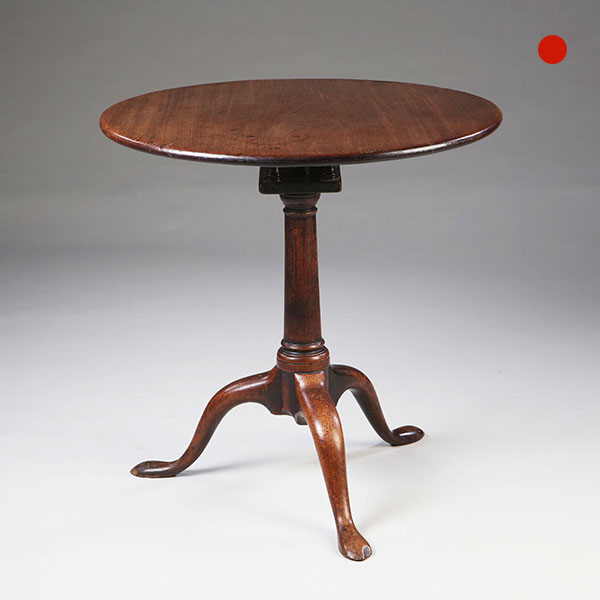
George III Mahogany Tripod or Snap
George III Mahogany Tripod Table or Snap-Top Table with Birdcage circa 1770. England SOLD Follow UsGeorge III Mahogany Tripod or Snap-Top Table with Birdcage, circa 1770. England Of solid mahogany, the gun barrel and one-piece top are raised...
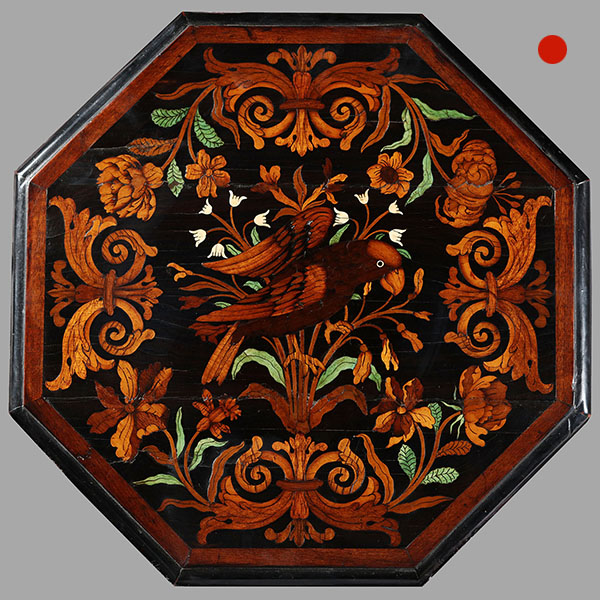
17th-Century Floral Marquetry Candle Stand
17th-Century Floral Marquetry Candle Stand, 1675-1690. The Metropolitan Museum of Art in New York decided to auction a number of pieces of exceptional merit.
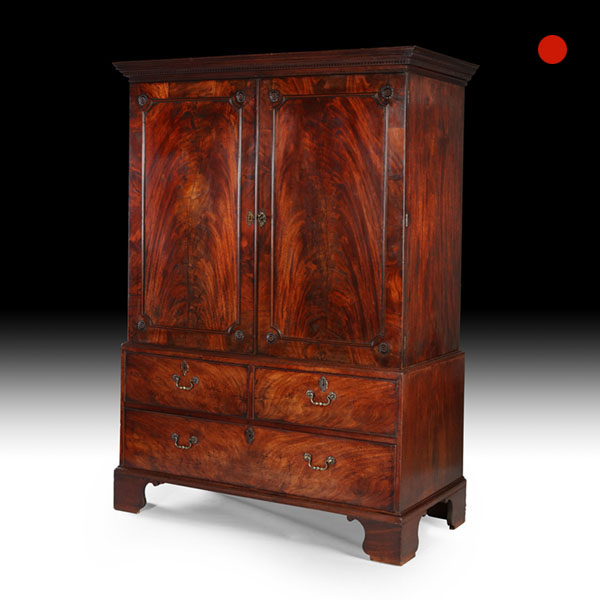
George III Mahogany Linen Press Wardrobe
George III Mahogany Linen Press Wardrobe 1760 England SoldGeorge III Mahogany Linen Press Wardrobe A fine George III mahogany linen press in outstanding original condition. The press was obviously made to exceed with the cabinetmaker using...
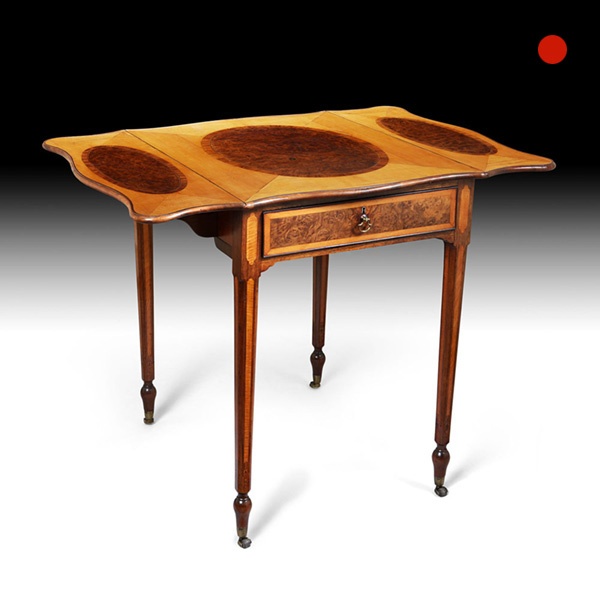
18th Century George III Satinwood and Pollard Oak Pembroke Occasional Table
An exceptionally fine and rare George III satinwood and pollard oak Pembroke table. The padauk top is veneered in satinwood cantered by large ovals of tightly clustered burr pollard oak reserves, bordered in princess wood and lined with fine ebony and box stringing.
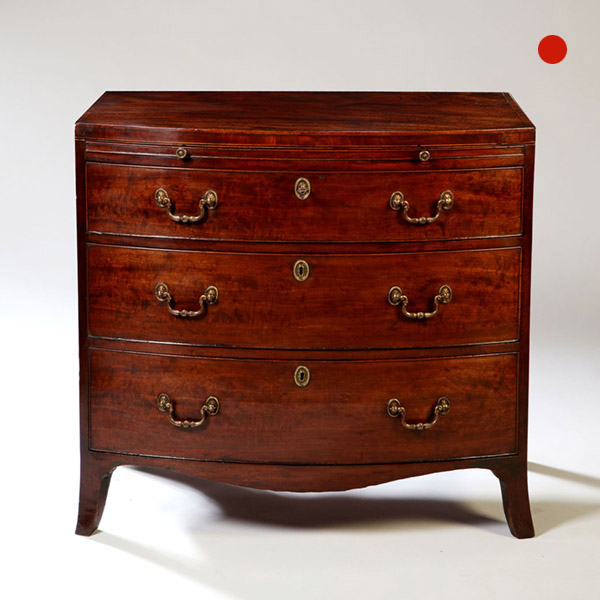
George III Sheraton period bow-fronted caddy topped mahogany chest of drawers
A fine George III Sheraton period bow-fronted mahogany chest of drawers with brushing slide. The chest has the perfect time aged colour to its original wax finished surface and has truly commendable proportions. I love everything about this outstanding and original piece.

William and Mary Kingwood or ‘Princes Wood’ Oyster Table Box
William & Mary Kingwood Oyster Table Box or ‘Princes Wood’, Circa 1690. England. Originally designed to store tableware and was given the apt name ‘table box’.

George III Mahogany Tripod or Snap
George III Mahogany Tripod Table or Snap-Top Table with Birdcage circa 1770. England SOLD Follow UsGeorge III Mahogany Tripod or Snap-Top Table with Birdcage, circa 1770. England Of solid mahogany, the gun barrel and one-piece top are raised...

17th-Century Floral Marquetry Candle Stand
17th-Century Floral Marquetry Candle Stand, 1675-1690. The Metropolitan Museum of Art in New York decided to auction a number of pieces of exceptional merit.

George III Mahogany Linen Press Wardrobe
George III Mahogany Linen Press Wardrobe 1760 England SoldGeorge III Mahogany Linen Press Wardrobe A fine George III mahogany linen press in outstanding original condition. The press was obviously made to exceed with the cabinetmaker using...

18th Century George III Satinwood and Pollard Oak Pembroke Occasional Table
An exceptionally fine and rare George III satinwood and pollard oak Pembroke table. The padauk top is veneered in satinwood cantered by large ovals of tightly clustered burr pollard oak reserves, bordered in princess wood and lined with fine ebony and box stringing.

George III Sheraton period bow-fronted caddy topped mahogany chest of drawers
A fine George III Sheraton period bow-fronted mahogany chest of drawers with brushing slide. The chest has the perfect time aged colour to its original wax finished surface and has truly commendable proportions. I love everything about this outstanding and original piece.
YOU MAY ALSO LIKE

Pair of 18th-Century English Rococo Gilt Bronze Andirons or Firedogs
An exceptional pair of 18th century English Rococo gilt bronze andirons or fire dogs.
The bold shape of these andirons relate to designs of Thomas Johnson (1714–1778), one of London’s pioneers of the ‘Modern’ or French style, later known as Rococo.
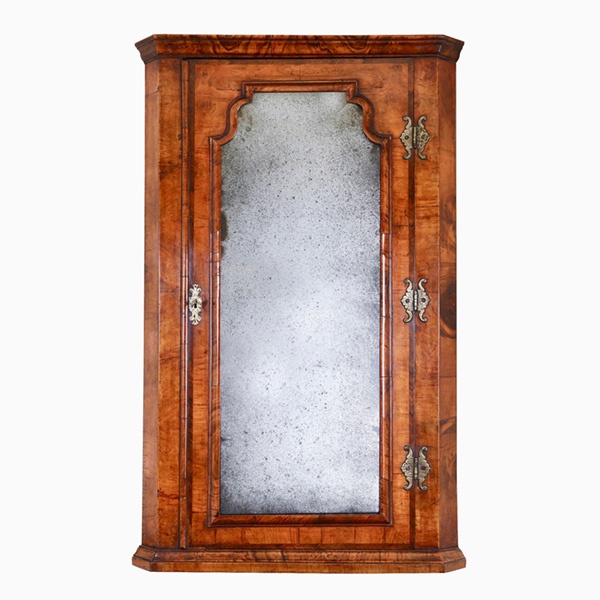
Queen Anne Walnut Corner Cupboard with Bevelled Mirror Plate
A truly remarkable find in original condition. To the door a shaped soft bevelled mirror plate is framed by a cross-grain molding of typical queen Anne design which is further cross-banded, feather-banded and edged to the opening with a single de-molding.

Pair of 18th-Century English Rococo Gilt Bronze Andirons or Firedogs
An exceptional pair of 18th century English Rococo gilt bronze andirons or fire dogs.
The bold shape of these andirons relate to designs of Thomas Johnson (1714–1778), one of London’s pioneers of the ‘Modern’ or French style, later known as Rococo.

Queen Anne Walnut Corner Cupboard with Bevelled Mirror Plate
A truly remarkable find in original condition. To the door a shaped soft bevelled mirror plate is framed by a cross-grain molding of typical queen Anne design which is further cross-banded, feather-banded and edged to the opening with a single de-molding.







